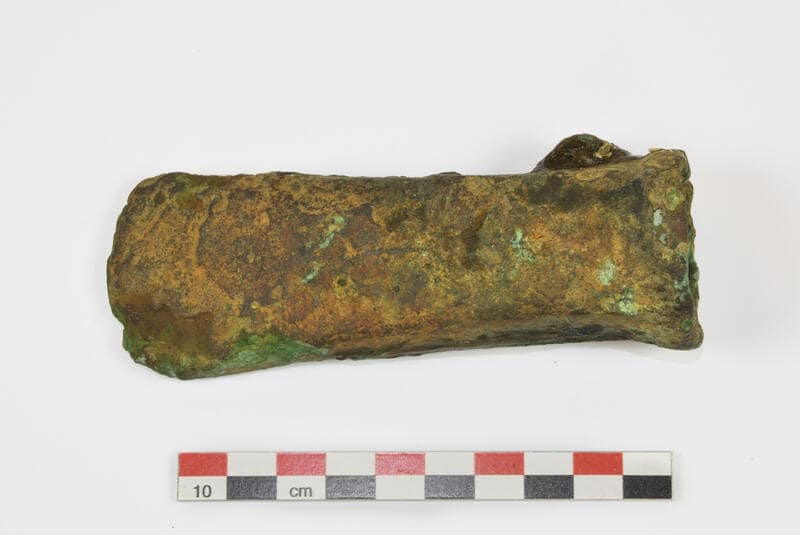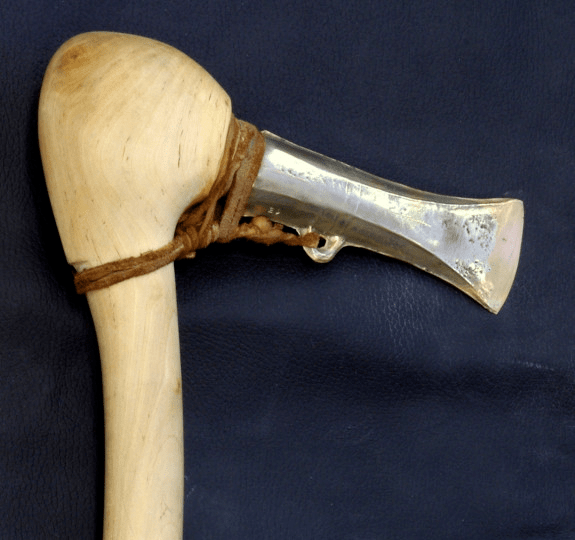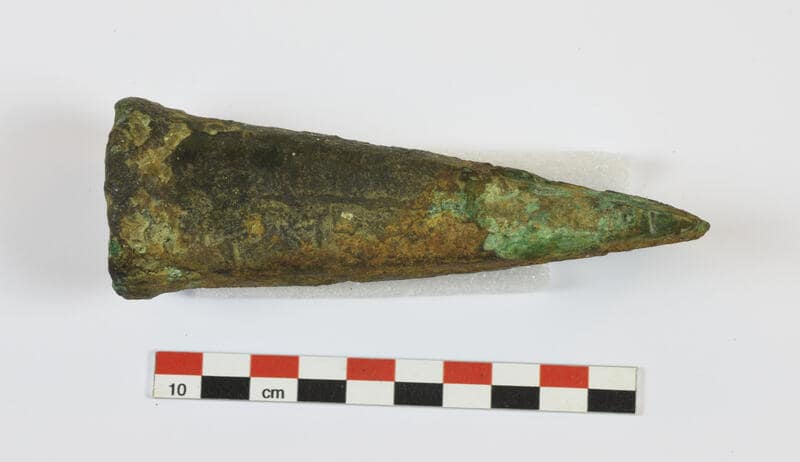1,100 B.C. Axe Found in Norwegian Waters: A Glimpse into Prehistoric Times

A remarkable discovery has been made off the southeastern coast of Norway, where a Bronze Age axe head has been unearthed from the sea near Arendal. This significant find, dated to approximately 1100 B.C., marks the first prehistoric metal artifact ever discovered in Norwegian waters. The axe was identified as a Middle Bronze Age piece, shedding new light on the region’s ancient maritime history.
Discovery of the Bronze Age Axe

The Bronze Age axe was discovered by Jørgen Johannessen, an archaeologist from the Norwegian Maritime Museum, during a routine survey of underwater cultural heritage. At a depth of 40 feet on the edge of a reef, Johannessen stumbled upon a pile of flint ballast, typically used between the 16th and mid-19th centuries to stabilize ships. Amidst this ballast, he spotted the bronze axe, immediately recognizing its anachronistic presence among the other items.
Description and Significance of the Axe

The recovered object is a hollow socketed axe, also known as a celt, a prevalent tool during the Nordic Bronze Age (1800-500 B.C.). The axe measures 4.5 inches in length and 1.85 inches at its widest point, weighing 11.5 ounces. Its design reflects an efficient and economical use of metal, featuring an angled wooden shaft inserted into the open end of the axe head. This discovery not only highlights the craftsmanship of the period but also raises intriguing questions about its journey to the seabed.
Theories on the Axe’s Journey to the Seabed
Two main hypotheses have emerged regarding how the axe ended up at its underwater resting place: the shipwreck hypothesis and the ballast hypothesis.
The Shipwreck Hypothesis
This theory posits that the axe might be the remnant of a shipwreck dating back over 3,000 years. It could belong to a vessel from southern Scandinavia or a local boat navigating along the coast. If proven true, this would represent the first known Bronze Age shipwreck site in Norway, offering unprecedented insights into ancient maritime activities.

The Ballast Hypothesis
According to this hypothesis, the axe was part of the ballast on a ship during the sailing age. It might have been discarded along with flint ballast when the ship neared the port in Arendal. If this scenario holds, the axe would have reached the seabed a few hundred years ago, transported from regions where flint is commonly found along the coastlines. This would classify the axe as a loose find, unconnected to its immediate surroundings other than the ballast flint.
Further Exploration and Research
Norwegian Maritime Museum archaeologists plan to return to the site this week to conduct further exploration. They aim to uncover additional evidence that could support either of the two hypotheses, particularly the intriguing possibility of a Bronze Age shipwreck. Such a discovery would be a groundbreaking addition to Norway’s archaeological record.
Conclusion
The discovery of the Bronze Age axe off the coast of Arendal is a significant milestone in Norwegian archaeology. As experts continue to investigate the site, the potential findings could offer profound insights into ancient maritime practices and trade routes. Whether part of a long-lost shipwreck or a discarded piece of ballast, the axe serves as a tangible connection to Norway’s distant past, inviting further exploration and understanding of our shared human heritage.
Video
News
The Hanging Temple: China’s 1,500-Year-Old Cliffside Marvel of Faith and Engineering
The Hanging Temple: China’s 1,500-Year-Old Cliffside Marvel of Faith and Engineering Perched precariously on the cliffs of Mount Heng in Shanxi Province, China, the Hanging Temple, also known as Xuankong Temple, Hengshan Hanging Temple, or Hanging Monastery, is an architectural…
The Willendorf Venus: A 30,000-Year-Old Masterpiece Reveals Astonishing Secrets
The Willendorf Venus: A 30,000-Year-Old Masterpiece Reveals Astonishing Secrets The “Willendorf Venus” stands as one of the most revered archaeological treasures from the Upper Paleolithic era. Discovered in 1908 by scientist Johann Veran near Willendorf, Austria, this small yet profound…
Unveiling the Maya: Hallucinogens and Rituals Beneath the Yucatán Ball Courts
Unveiling the Maya: Hallucinogens and Rituals Beneath the Yucatán Ball Courts New archaeological research has uncovered intriguing insights into the ritual practices of the ancient Maya civilization. The focus of this study is a ceremonial offering found beneath the sediment…
Uncovering the Oldest Agricultural Machine: The Threshing Sledge’s Neolithic Origins
Uncovering the Oldest Agricultural Machine: The Threshing Sledge’s Neolithic Origins The history of agricultural innovation is a fascinating journey that spans thousands of years, and one of the earliest known agricultural machines is the threshing sledge. Recently, a groundbreaking study…
Nara’s Ancient Sword: A 1,600-Year-Old Protector Against Evil Spirits
Nara’s Ancient Sword: A 1,600-Year-Old Protector Against Evil Spirits In a remarkable discovery that has captured the attention of archaeologists and historians alike, a 7.5-foot-long iron sword was unearthed from a 1,600-year-old burial mound in Nara, Japan. This oversized weapon,…
The Inflatable Plane, Dropped Behind the Lines for Downed Pilots
Experimental The Inflatable Plane, Dropped Behind the Lines for Downed Pilots The Inflatoplane from Goodyear was an unconventional aircraft developed by the Goodyear Aircraft Company, a branch of the renowned Goodyear Tire and Rubber Company, also famed for the Goodyear…
End of content
No more pages to load











